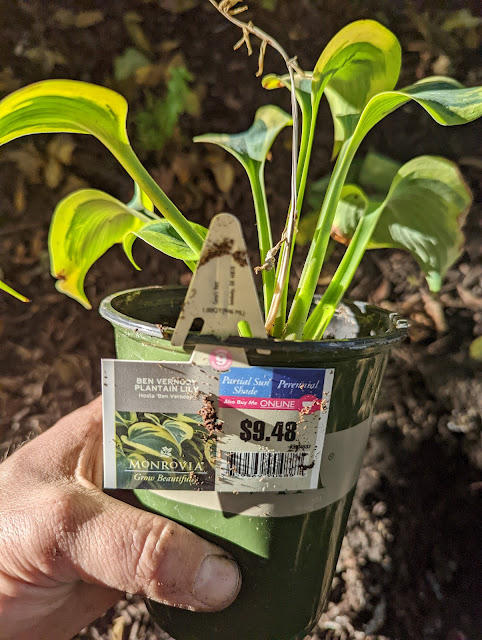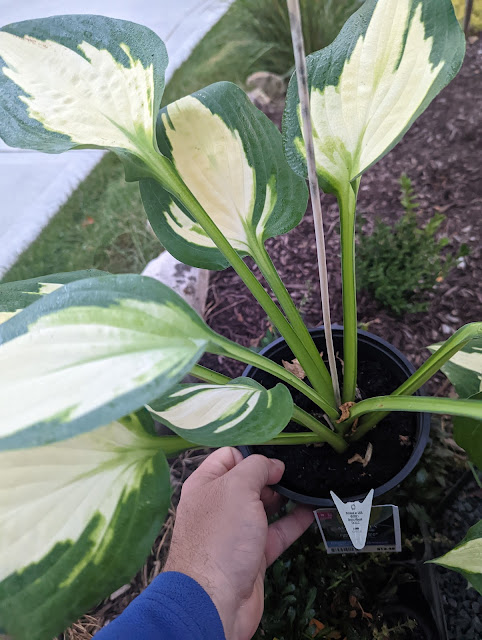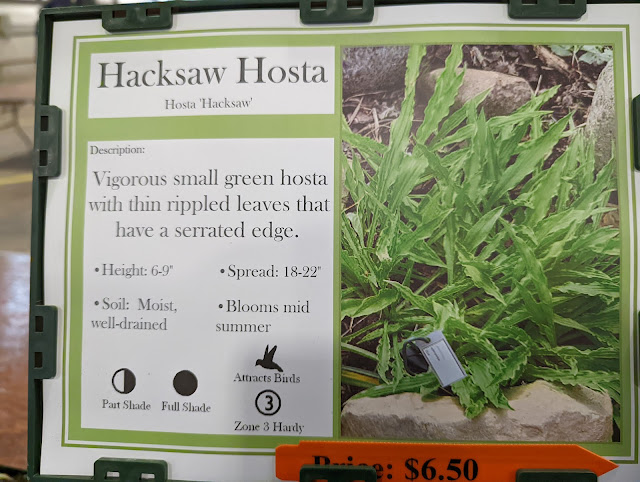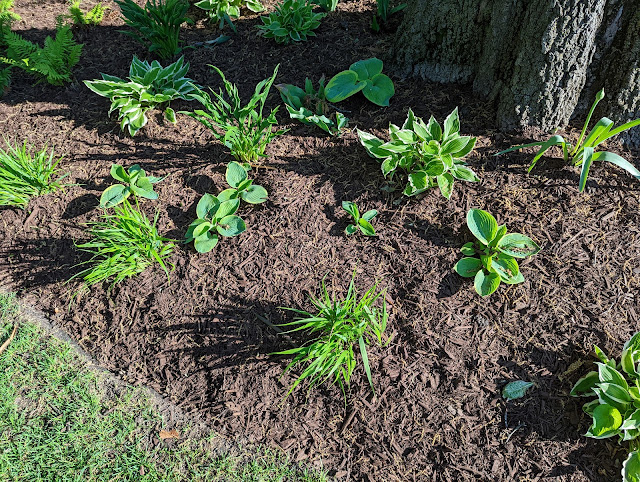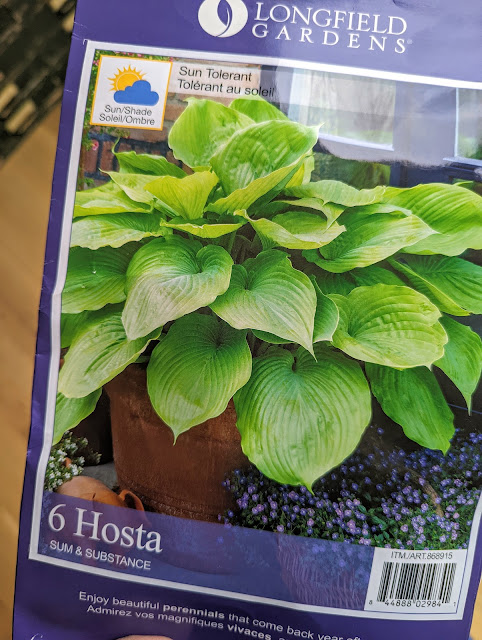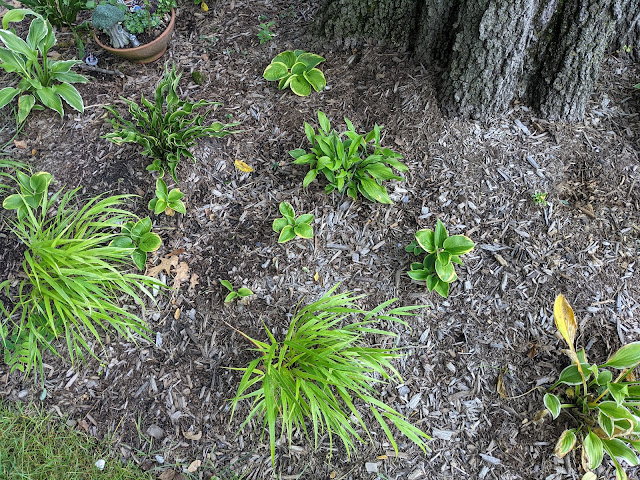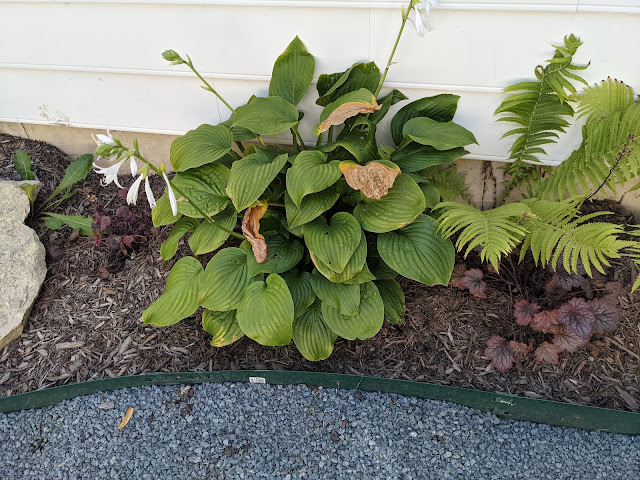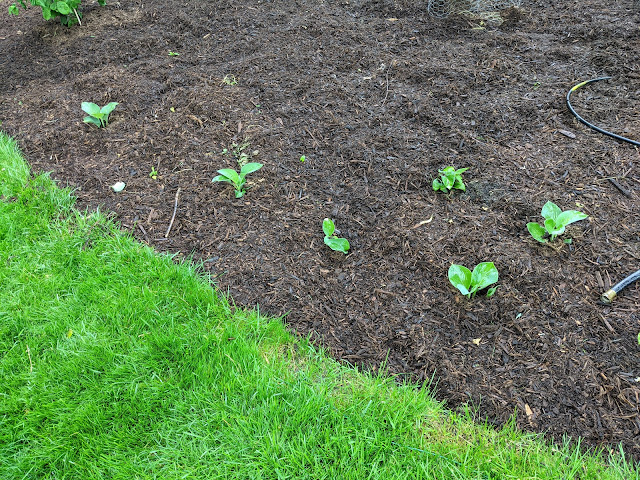Hacksaw Hosta - New Growth - July 2024

We bought a small, unique hosta named the Hacksaw Hosta at the Morton Arboretum Plant Sale back in Spring of 2022 and planted it in the backyard. The (dang!) rabbits ate it up, but it came back for year two - 2023 - and put on some growth . This year - the third growing season (two years since planting), the Hacksaw hosta has sort-of spread out. And has thrown up a one fully-formed hosta and a third tiny sprout. See below for the current state showing the two hostas and on the right...the start of a tiny third one: Part of my 2024 to-do plan is to keep going on the 'Hosta Replacement Plan'. When I think about replacing hostas, this Hacksaw isn't one of them that needs to go. It is unique and worth highlighting as a specimen in the shade garden.

